2015 Dodge Challenger Review
Price Estimate: $19,990 - $57,990
 View 377 more photos
View 377 more photos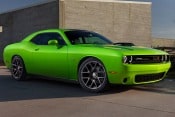 View 377 more photos
View 377 more photos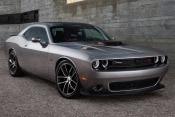 View 377 more photos
View 377 more photos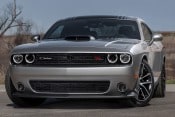 View 377 more photos
View 377 more photos View 377 more photos
View 377 more photos+373
Edmunds' Expert Review
by the Edmunds Experts
Pros
- Strong V8 engines, topped by the new 707-hp Hellcat
- supple, quiet ride
- room for four adults
- huge trunk.
Cons
- Poor rearward visibility
- beefy size dulls acceleration and handling.
What’s new
For 2015, the Dodge Challenger gets a major overhaul. Headlining the act is the new SRT Hellcat, which gets a supercharged V8 engine good for a rather outlandish 707 hp. On all Challengers, you'll find new styling details, a revised and upgraded interior and a new eight-speed automatic transmission.
Edmunds says
The 2015 Dodge Challenger boasts a rare mix of talents, combining the power and attitude of a muscle car with the refinement of a luxury coupe.
For sale nationwide
550 listings
- $52,590fair price$1,163 below market
- 8,382 miles
- No accidents, 2 owners, personal use only
- 8cyl manual
- Carvana - Portland (1,208 mi away)
- Home delivery*
- Back-up camera
- Bluetooth
- Navigation
- Leather Seats
- Upgraded Headlights
Close
Located in Portland, OR
At Carvana, we go miles beyond the extra mile. That's why we provide you with a convenient, fast, and hassle-free car buying experience that puts you ...
AutoCheck Vehicle History Summary
Accident Free Vehicle: Yes
Personal Use Only: Yes
History Provider: AutoCheck
Title Details: Clean Title
Salvage Vehicle: No
Frame Damage: No
Theft History: No
Lemon Status: No
Free History Report: No
Features and Specs:
16 Combined MPG (13 City/22 Highway)
Listing Information:
VIN: 2C3CDZC99FH887865
Stock: 2003720398
Certified Pre-Owned: No
Listed since: 05-09-2025 - $27,990fair price$458 above market
- 21,232 miles
- No accidents, 2 owners, personal use only
- 8cyl manual
- Carvana - Indianapolis (718 mi away)
- Home delivery*
- Back-up camera
- Bluetooth
- Navigation
- Sunroof/Moonroof
- Power Driver Seat
Close
Located in Indianapolis, IN
At Carvana, we go miles beyond the extra mile. That's why we provide you with a convenient, fast, and hassle-free car buying experience that puts you ...
AutoCheck Vehicle History Summary
Accident Free Vehicle: Yes
Personal Use Only: Yes
History Provider: AutoCheck
Title Details: Clean Title
Salvage Vehicle: No
Frame Damage: No
Theft History: No
Lemon Status: No
Free History Report: No
Features and Specs:
18 Combined MPG (15 City/23 Highway)
Listing Information:
VIN: 2C3CDZAT1FH703419
Stock: 2003846117
Certified Pre-Owned: No
Listed since: 07-02-2025
Vehicle overview
Paying homage to the past while still being fully up to date is a pretty tough feat, yet the 2015 Dodge Challenger manages to do just that. This retro-styled muscle car sports updated styling this year. That seeming oxymoron means it has swapped out its previous 1970-style grille and taillights for 1971-inspired units that, to our eyes, work even better. Yet underneath those classic lines the Challenger is completely modern with its keyless ignition, infotainment system and eight-speed automatic transmission, the latter allowing a big coupe with a near-500-hp V8 to earn a 25 mpg highway rating.
This year also brings a much-improved interior with higher-quality materials, and that new infotainment system is the same highly regarded 8.4-inch touchscreen interface used in most other Chrysler, Dodge and Jeep products. The Challenger's base V6 engine carries over, but there's a new Challenger R/T "Scat Pack" edition, which provides the same 485-hp V8 as the SRT 392 but at a lower price point. Rumbling in with the biggest stick of all is the new SRT Hellcat, which sends a pavement-rippling 707 hp and 650 pound-feet of torque to the rear wheels via a supercharged 6.2-liter V8.
Put one of these boffo V8 engines under the hood of just about any car and you'd be guaranteed to have something that's a blast to drive. But what really impresses us is the Challenger's measure of practicality. Unlike its admittedly smaller Chevy and Ford rivals, the Challenger offers an adult-friendly backseat, a large trunk and a quiet, comfortable ride that all make this boulevard bruiser a fine daily driver and road tripper. True, the 2015 Dodge Challenger isn't quite as athletic when you're driving enthusiastically around tight turns. The Chevrolet Camaro and Ford Mustang boast sharper handling (particularly in their respective track-oriented Z/28 and GT350 guises) and simply aren't as bulky. But they also have tight backseats and firmer rides.
All three of these cars are very impressive. But it's the Challenger that best represents the modern take on a classic American muscle car. It's got the ability to do John Force-worthy burnouts, the most identifiable heritage-based style, composed ride and handling and that big interior space that's ideally suited for cruising this big country of ours. And, if that's still not enough for you, there's the Hellcat, which allows you to brag to your friends that you've got more ponies under the hood than a Lamborghini Aventador. If you're shopping for a 2015 performance coupe, the Challenger is a must-see.
Performance & mpg
All 2015 Dodge Challengers are rear-wheel drive. The base SXT is powered by a 3.6-liter V6 engine that produces 305 hp and 268 lb-ft of torque. An eight-speed automatic transmission is standard. EPA fuel economy estimates stand at 23 mpg combined (19 city/30 highway).
The Challenger R/T gets a 5.7-liter V8 and a standard six-speed manual transmission that harnesses 375 hp and 410 lb-ft. When hooked up to the available eight-speed automatic, the V8's output drops slightly to 372 hp and 400 lb-ft. In Edmunds testing, a manual-equipped Challenger R/T went from zero to 60 mph in 5.8 seconds. Although that's respectable, it's still about a second slower than what you can expect from a V8-powered Camaro or Mustang. Fuel economy is 19 mpg combined (16/25) for the automatic and 18 mpg combined (15/23) with the manual.
The Challenger R/T Scat Pack and SRT models get their swagger from a 6.4-liter V8 that produces 485 hp and 475 lb-ft of torque. A six-speed manual is standard and an eight-speed automatic is optional. In Edmunds testing, a manual-equipped SRT 392 went from zero to 60 mph in 4.5 seconds, which is impressively quick, if still a bit off the pace of the top Camaro or Mustang. SRT fuel economy estimates stand at 18 mpg combined (15/25) for the automatic and 17 mpg combined (14/23) for the manual.
The Challenger SRT Hellcat packs a 6.2-liter supercharged V8 that cranks out 707 hp and 650 lb-ft. With only so much traction available from the 275-width rear tires (the Viper, with less power, has 335-width rear tires), we got a 0-60 time of 4.1 seconds with the automatic. More telling of this car's capability is the 11.9-second, 123.4-mph quarter-mile performance. The EPA says you'll get 16 mpg combined with either transmission.
Safety
Every 2015 Dodge Challenger comes standard with antilock disc brakes, stability and traction control, active front head restraints, front side airbags and side curtain airbags.
Rear parking sensors, a rearview camera, blind spot monitoring, rear cross-traffic alerts and a forward collision warning system are available. The added functionality of the 8.4-inch Uconnect touchscreen potentially includes remote vehicle access, emergency assistance and stolen vehicle locating.
In Edmunds brake testing, an R/T came to a stop from 60 mph in 111 feet, a short distance, though that's typical for a performance car with summer-rated tires. An SRT8 392 did even better, at 106 feet, while a Hellcat was right there with 108 feet.
In government crash testing, the Challenger received a top five-star rating for overall crash protection, with four stars for total frontal-impact safety and five stars for total side-impact safety. The Insurance Institute for Highway Safety gave the Challenger its top safety score of Good in the moderate-overlap front-impact and side-impact crash tests. The IIHS gave the Challenger its second best score of Acceptable in roof strength and head restraint (whiplash protection) tests. In the small-overlap front-impact test, the Challenger received the second lowest rating of Marginal from the IIHS.
Driving
One of the 2015 Dodge Challenger's signature traits is its excellent ride quality. You could take this big coupe on an all-day road trip and feel as if you never left your sofa. The default suspension tuning of the base SXT is pretty floaty, however. As such, we recommend springing at least for the SXT Plus, as it includes firmer underpinnings. Otherwise, the Challenger actually handles rather well. This is especially true of the higher-performance versions, which provide a crisp, responsive and confident drive on a curvy road. Still, none of them will let you forget about the car's sheer bulk, especially on narrow roads. The Mustang and Camaro are more agile and less imposing around tighter turns.
The V6 model is obviously less thrilling than the V8s, but with 305 horses on tap, it can certainly hold its own. If you've got one of the V8s under the hood, though, you'll be treated to a proper muscle car experience. The standard R/T's 5.7-liter V8 accelerates smartly and makes lovely noises, while the Scat Pack, SRT 392 and SRT Hellcat's gonzo V8s are off the charts in both respects. Although the manual transmission is easy to operate, it does have somewhat long throws and doesn't like to be rushed. As such, those who plan on running quarters on Grudge night may want to consider the speedy automatic gearbox, which snaps off much quicker shifts.
Interior
This year's refresh has given the Challenger the stylish cabin it has long deserved. A driver-centric theme is evident in the canted center console and configurable central dash display. Automatic-transmission cars sport a T-handle that recalls the selector used in the original 1970s Challenger. Moreover, the small-diameter, well-contoured steering wheel makes for a pleasant interface between car and driver. Overall materials quality is very good, and the dash features handsome metallic accents. Another notable improvement is the use of Dodge's superb 8.4-inch, multifunction touchscreen. It features large virtual buttons, an intuitive layout and fairly quick responses. Even the base 5-inch screen works pretty well.
The front seats in most Challengers are wide and flat, which doesn't do much for lateral support, but they're comfy for long-distance drives. The sport seats have better side bolstering and are also covered in leather and simulated suede. The backseat is remarkably roomy for two adults, with good headroom and decent legroom. It also features a 60/40-split-folding back, a fold-down armrest and even a middle seat for tiny or exceptionally good-natured folks. The trunk is also generously sized; at 16.2 cubic feet, the Challenger's cargo hold is positively enormous for this segment, rivaling some large sedans for hauling capacity.
Our chief complaint with the interior involves rearward visibility, which is tough due to the Challenger's high beltline and chunky rear roof pillars. However, the available rearview camera and parking sensors are a huge help when maneuvering into a parking spot.
2015 Dodge Challenger models
The 2015 Dodge Challenger is a five-seat coupe that is offered in seven trim levels: SXT, SXT Plus, R/T, R/T Plus, R/T Scat Pack, SRT 392 and SRT Hellcat.
The SXT starts with the V6 engine, 18-inch alloy wheels, keyless entry and ignition, a 7-inch configurable dash display, Bluetooth phone and audio connectivity, full power accessories, cruise control, auto-dimming rearview mirror, automatic climate control, a tilt-and-telescoping leather-wrapped steering wheel, a six-way power driver seat (with power lumbar adjustment), a 60/40-split-folding rear seat, a trip computer, a 5-inch touchscreen interface (Uconnect), voice commands and a six-speaker sound system with a CD player and an auxiliary audio jack.
The SXT Plus adds 20-inch alloy wheels, a rear spoiler, performance suspension and brakes, foglights, automatic headlights, rear parking sensors, a rearview camera, leather upholstery, heated and ventilated front seats, a heated steering wheel with power tilt-and-telescoping adjustments, an 8.4-inch Uconnect touchscreen and an upgraded sound system with satellite radio and an iPod/USB audio interface.
The Challenger R/T essentially starts with the SXT equipment and adds the 5.7-liter V8 engine and 20-inch alloy wheels. Opt for the Challenger R/T Plus and you'll get the same upgrades as the SXT Plus.
Available for the SXT Plus and R/T Plus is the R/T Classic package, which adds old-school dual R/T side stripes, 20-inch classic five-spoke wheels, xenon headlights and upgraded leather upholstery with simulated suede inserts. Also optional on both the SXT and the R/T is the Super Track Pak (not a typo), which features unique 20-inch black wheels; higher-performance suspension, steering and brakes; and, for the SXT, the body-color rear spoiler, rear parking sensors and a rearview camera.
The R/T Scat Pack trim starts with the R/T's features and adds a more powerful V8, 20-inch wheels, an upgraded suspension, Brembo brakes, active exhaust system, front and rear spoilers, performance-oriented stability control programming, front sport seats, Bluetooth audio, a navigation system, an 8.4-inch touchscreen and an upgraded sound system with satellite radio and an iPod/USB audio interface.
Optional on the Scat Pack is the Leather Interior Group, which includes the upgraded leather/simulated suede sport seats, heated and ventilated front seats and a heated steering wheel with power tilt-and-telescoping adjustment. Also available is the Scat Pack Appearance Group, which features different wheels, a gloss black grille, xenon headlights and "Bumble Bee" rear stripes.
If you're into the Challenger for nostalgia's sake, the R/T, R/T Plus and Scat Pack can all be equipped with a "Shaker" hood, conical intake filter and Shaker exterior graphics as well.
The Challenger SRT 392 starts with the Scat Pack with the Leather Interior Group and adds a unique hood with center scoop, forged 20-inch wheels, improved Brembo brakes, xenon headlights, adaptive suspension dampers, adjustable driver modes and an 18-speaker Harman Kardon audio system.
At the top of this meaty food chain is the Challenger SRT Hellcat, which starts with the features of the SRT 392 and adds a supercharged V8, two key fobs that control engine output (black is reduced power, red is full power), a unique hood with a center scoop and air extractors, black rocker panels, larger front and rear spoilers, remote start, rear parking sensors, a rearview camera, blind-spot/rear cross-path monitoring and the Harman Kardon audio system.
Other option packages (depending on trim level) include the Driver Convenience Group (power-folding mirrors, xenon headlights, rear parking sensors, blind-spot/rear cross-path monitoring, remote start) and the Technology Group (automatic wipers, automatic high-beam headlight control, adaptive cruise control and forward collision warning). Individual option highlights (depending on trim level) include a sunroof, xenon headlights, the Harman Kardon audio system and a navigation system (includes HD and satellite radio as well as smartphone app integration). There are also a variety of special Mopar parts and styling enhancements from which to choose.
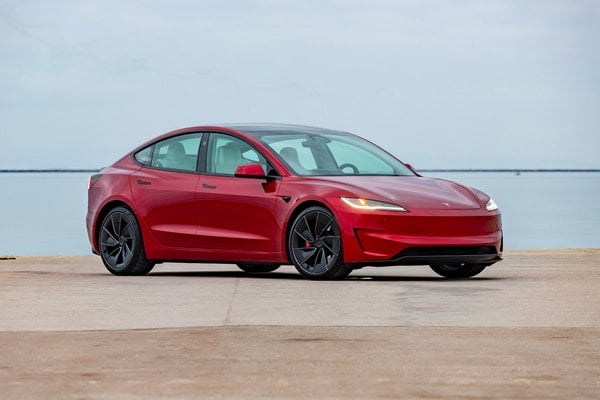
Our 2024 Tesla Model 3 Performance Is an Edmunds U-Drags Assassin
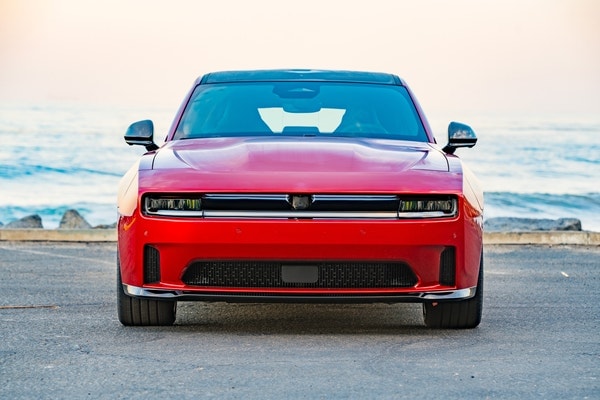
Here's What Really Happened With Our Dodge Charger EV's Unintended Acceleration
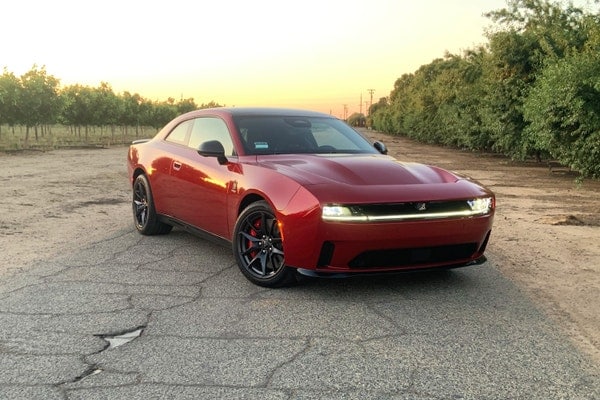
Yikes! Our Dodge Charger Daytona EV Had a Curious Case of Unintended Acceleration
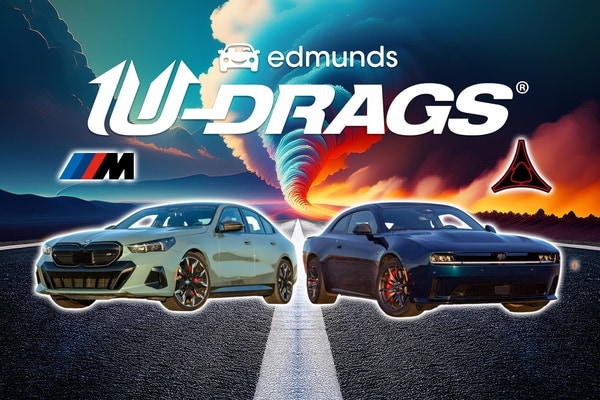
BMW i5 M60 vs. Dodge Charger Daytona: Big EVs Battle in Edmunds U-Drags
Compare 2015 Dodge Challenger trim levels
Helpful trims summary and side-by-side comparison chart
Cost to Drive
Monthly estimates based on costs in North Dakota
$166/mo for Challenger SXT
Challenger SXT
vs
$200/mo
Avg. Large Car
Reliability Ratings by RepairPal
3.5 out of 5 stars3.5/5Above Average
#25 out of 28 among Midsize Cars
RepairPal Reliability Ratings are based on the actual cost, frequency, and severity of unscheduled repairs and maintenance on make/model data for select 2008-2022 vehicles. The reliability of a specific vehicle may vary depending on its maintenance and driving history, model year, trim, and features.
Cost
$534/yr
vs. $415/yr
for Average Midsize Car
for Average Midsize Car
Frequency
0.83x/yr
vs. 0.87x/yr
for Average Midsize Car
for Average Midsize Car
Severity
16.4%
vs. 10.2%
for Average Midsize Car
for Average Midsize Car
powered by RepairPal
Dodge Challenger Owner Reviews
Most Helpful Owner Reviews
Trending topics
Traded in a 2012 Chrysler 300c AWD Luxury Series..
5 out of 5 starsRay H, 07/21/2015
2015 Dodge Challenger R/T Scat Pack 2dr Coupe (6.4L 8cyl 6M)
If you are buying this car for the gas mileage...don't! Although if you don't go crazy around town you can get 15 of the most fun miles per gallon you have ever experienced. If you travel on open roads, look for around 22 - 24 MPG. This car is not about gas mileage, it is about fun, and it delivers that! I am old enough to remember the original Challenger the current 2015 is based on … (1971) and Dodge nailed it on this one. A classic look brought into the 21st century. I have the 6 speed Tremec manual transmission that is hooked up to the new 392 CID Hemi engine from Dodge with 485 HP and 475 ft/lb of torque. What a blast to run it thru the gears and hear the Active Exhaust screaming - this car is not subtle! Take all of the good things you remember from the 'old days' and add safety to it, and you have the Scat Pack. (Active Exhaust re-routes the exhaust gases around the baffles, basically giving you 'straight flow pipes' from the catalytic converters to the rear of the car, i.e., no mufflers, no resonators. It is electronically controlled so driving around town or highway under light load the car is (relatively) quiet. Step on the gas pedal hard, everything gets re-routed in an instant and OMG! what a nice sound!)
The car rides very comfortably and is surprisingly nimble for 2+ tons of fun - lots of back roads here in Western Pennsylvania and this car does well on them. It isn't a Porsche by any means, but it also isn't an aircraft carrier either, LOL! Straight line acceleration is scary - you are hitting red line and road speed limits *REAL* fast. Nice thing is that it also stops REAL quick with the 4 piston Brembo brakes at all 4 wheels. The interior is well done, with nice finishes and materials - nicer than the current Camaros and Mustangs by a longshot. When at cruising interstate speeds, the car is quiet enough that you can have a normal conversation with your significant other. The back seats are actually usable if you're not 6' or taller, and have nice leg room for a two door coupe.
The U-Connect entertainment/NAV unit is probably the best and most user-friendly system on the market. I have an iPod, a USB stick and an SD memory card, all with music on them active at the same time. I can also connect my phone via Bluetooth for the normal stuff - and it can read my text messages to me as I am driving. I do wish that they had used either a faster processor or more memory in the unit, it takes a few seconds to get a screen every time you browse your music - even if you just did it. It appears that they don't index once and remember until something changes, but re-index on every browse. When you have 60 Gb of music, that takes about 10-15 seconds!
Let's get back to performance for a minute - did I mention it is fast?! I haven't had mine on the track yet, but others I know with the same car are running in the range of 12.5sec/110mph for the 1/4 mile - on stock tires and wheels. If I had to find complaint with this car, it's that the tires just aren't wide enough to hook up quickly - only 245/35 tires and 9"x20" rims come on this beast. I guess Dodge figured the aftermarket would take care of that. To put this in perspective, this is faster than those original 426 CID Hemis that everyone remembers from the 'old days' by a wide margin. Isn't Science and Engineering wonderful!!! You can bring up 'Performance Pages' onscreen that let you choose how you want your Sport Mode button set up, such as quicker engine response and opening the Active Exhaust, turning off traction control, changing the effort on the electrically powered steering. It also has a Launch Page - set your RPM, it takes the engine to that speed and helps keep the wheels from spinning when you release the clutch. Did I mention it is fast?
Would I make the deal again, trading in a beautiful, smooth, high end leather and wood interior, all wheel drive Hemi for this, knowing what I know about the Scat Pack now and knowing that winter driving will be limited in the Scat Pack because of so much torque at any range??? Hell YEAH!!! In a rapid heartbeat!!! This car has the best price/performance ratio of any car out there.
Update: 2016-07-21, 6300 miles on it
1) MPG - isn't something I care about!
2) Useless in snow/ice, good in everything else
3) got louder and quicker
4) interior still tight and quiet
5) tired of vague shifting, replaced linkage with Barton Industries linkage. MUCH better!
6) still draws a crowd, still gets 'thumbs up' on the road!
7) still smile when starting and driving it
8) WOULD DO THE PURCHASE AGAIN! Not sure having this much fun is still legal!!!
**Update January, 2019 (15610 miles on the odometer) :
Now cammed, tuned and putting out 510 HP at the wheels! OST Dyno rules!
**Update 08/01/19 - All above still applies!
***Update 01/29/21 - Still own it, still having fun! Still sounds solid inside, roars from the outside. No major problems mechanically, paint still pearl white. FUN!
Awesome for a V6, but terrible resale value
5 out of 5 starsNatalie Groeger, 10/09/2015
2015 Dodge Challenger SXT Plus 2dr Coupe (3.6L 6cyl 8A)
UPDATE on 4.12.2016: I've had this car as my daily driver since 7.23.2015, so about 9 months by now. Bought it brand new back then and thought it was the best thing ever. As it's a V6 I've been driving to dealerships lately to weigh my options on upgrading to a V8. Since I'm mostly driven by the exhaust systems I've got my eyes on the newer 5.0 Mustang GT's. A Ford dealer did a quick … appraisal of my garage-kept, trophy-winning Challenger and I must say I was quite disappointed with the rapid depreciation of the car. One thing's for sure, I won't be buying anymore sports cars in generic colors like black anymore. I'll be looking into something that holds its value longer such as a Roush/Boss, etc.
This has been a great car, but when I'm upgrading to a V8 I don't want a Challenger R/T when you figure the engine displacement to power ratio compared to other brands. But as far as V6's go the Challenger is, hands down, the coolest of the bunch, so I can't say I regret my purchase. The power has been great, especially with the K&N cold air intake I installed within a month after buying it. That improved the motor sound considerably and has tamed the fuel consumption a good bit as well. Overall fuel consumption is good for a 4,000 lb. car, but I can already tell it's deteriorated slightly in the short amount of time I've owned her. I would say it may already be time for a fuel system flush, but seems too early to be necessary. I don't know if that's a Dodge thing or what, but our Fusion with 63,000 miles on it seems to be holding its average MPG quite well in comparison.
I updated my rating on the comfort category simply due to me recently having issues with the wheel base(s) squeaking whenever I go over minor bumps like in a poorly constructed parking lot. When I took it into the dealership to have them investigate it they told me the most ridiculous statement I'd ever heard - "It's metal and plastic and it'll squeak when they rub together". Thank you, Sherlock, but of all the cars (which every car out there has metal rubbing against plastic at the wheels) I've driven none of them squeak over such small bumps, and I don't want to hear it happening on a car I've had for only 9 months.
Then there was the issue with the transmission. I've adored and still do adore the ZF8HP 8-speed automatic from Germany. However, I never drive it in sport mode unless I'm using the paddle shifters as a manual due to this ongoing problem I've been having. In sport mode (without the paddle shifters) if you accelerate as though you would any day you're ready to get home from a 9 hour shift the transmission will start hunting for gears when it realizes you aren't necessarily driving Dukes of Hazzard style through the city. However, when it's hunting it will literally jolt the car back and forth so violently you'll feel as though you're being repeatedly rear-ended. I explained this to the, once again, oh-so-helpful Dodge dealer and they, once again, told me it was "normal". They must think I was born yesterday for me to believe that all cars do this in sport mode. All of the Mercedes I've driven, my brother's Mustang, and the plethora of rental/loaner cars I've driven in sport mode have never jolted like that in sport mode. I've just let them be as I'll, as stated, be trading it in toward another car in the next year and will simply use the paddle shifters anytime I decide to drive in sport mode.
This car is an amazing machine.
4.75 out of 5 starselt2jv, 03/29/2015
2015 Dodge Challenger SRT 392 2dr Coupe (6.4L 8cyl 6M)
Dodge really hit the perfect blend of retro styling and modern performance. Aesthetics are always subjective; you either like the looks or you don't. Empirically, the interior is very nicely driver-centric and easy to access all functions and features. The 8.4 Uconnect system is great and easy to use. Ride and comfort are sporty, even in "Street" mode, but still very comfortable. … Performance is, of course, breath-taking. Absolutely beastly power at your command, but still can get 23 MPG on the freeway (manual).
Summary: A true muscle car with all the modern conveniences of a luxury coupe. Not for everyone, but for those who want one, you will not be disappointed.
Thrilled with the car
5 out of 5 starsTerrence Devlin, 04/10/2015
2015 Dodge Challenger R/T Scat Pack 2dr Coupe (6.4L 8cyl 6M)
I traded a 7000 mile 2010 SRT8 for the R/T Scat Pack and couldn't be happier with the decision. The car is comfortable, powerful, good looking, and sounds amazing.
After owning this car for just over three years, I'm still thrilled with it. Zero issues with the car.
2015 Dodge Challenger videos
2015 Dodge Challenger SRT Hellcat First Drive
For 2015, the Dodge Challenger receives the most significant makeover since its reintroduction in 2008. Exterior styling updates are inspired by the 1971 Challenger, and the interior sees dramatic improvements and added features. The big news, however, is the debut of the SRT Hellcat model that takes the crown as the most powerful production muscle car. Ever.
2015 Challenger Highlights
Coupe
SXT
| Base MSRP Excludes Destination Fee | $26,995 |
|---|---|
| Engine Type | Gas |
| Combined MPG | 23 MPG |
| Cost to Drive | $166/month |
| Seating | 5 seats |
| Cargo Capacity All Seats In Place | 16.2 cu.ft. |
| Drivetrain | rear wheel drive |
| Warranty | 3 years / 36,000 miles |
Safety
Key safety features on the Challenger include:
- Back-up camera
- Blind Spot Monitoring
- Lane Departure Warning
- Alarm
- Tire Pressure Warning
- Stability Control
- Post-collision safety system
NHTSA Overall Rating
5 out of 5 starsThe National Highway Transportation Safety Administration offers independent analysis.
- Frontal Barrier Crash RatingOverall4 / 5Driver4 / 5Passenger5 / 5
- Side Crash RatingOverall5 / 5
- Side Barrier RatingOverall5 / 5Driver5 / 5Passenger5 / 5
- Combined Side Barrier & Pole RatingsFront Seat5 / 5Back Seat5 / 5
- RolloverRollover4 / 5Dynamic Test ResultNo TipRisk Of Rollover11.1%
IIHS Rating
The Insurance Institute of Highway Safety uses extensive crash tests to determine car safety.
- Small Overlap Front Driver-Side TestMarginal
- Small Overlap Front Passenger-Side TestNot Tested
- Moderate Overlap Front Test – OriginalGood
- Moderate Overlap Front Test – UpdatedNot Tested
- Side Impact Test – OriginalGood
- Side Impact Test – UpdatedNot Tested
- Roof Strength TestAcceptable
- Rear Crash Protection / Head RestraintAcceptable
People who viewed this also viewed
| 5.0 average Rating out of 8 reviews. |
| Starting at $30,900 |
| 5.0 average Rating out of 9 reviews. |
| Starting at $34,295 |
| 4.0 average Rating out of 1 reviews. |
| Starting at $158,600 |
Related Used 2015 Dodge Challenger info
Vehicle reviews of used models
- Audi S5 2020 Review
- Nissan NV200 2020 Review
- Porsche Cayenne Coupe 2020 Review
- Nissan 370Z 2020 Review
- Mazda 6 2020 Review
Shop similar models
Shop used vehicles in your area
- Used Dodge Challenger 2010
- Used Dodge Challenger 2011
- Used Dodge Challenger 2012
- Used Dodge Challenger 2013
- Used Dodge Challenger 2014
- Used Dodge Challenger 2015
- Used Dodge Challenger 2016
- Used Dodge Challenger 2017
- Used Dodge Challenger 2018
- Used Dodge Challenger 2019
Popular new car reviews and ratings
- 2026 Subaru Ascent News
- 2024 Dodge Ram Pickup 1500
- 2025 C-Class
- 2024 Toyota Tundra
- 2026 Cherokee
- 2026 Hyundai Santa Fe Sport News
- 2025 Chevrolet Silverado 3500HD
- 2025 Porsche Macan
- 2025 3 Series
- New Toyota T100
Research other models of Dodge
- New Dodge Hornet
- Dodge Charger 2024
- 2025 Dodge Durango
- Dodge Durango 2024
- 2024 Durango
- New Dodge Durango
- 2024 Dodge Durango
Research similar vehicles
Other models
- Used Kia Sorento-Plug-In-Hybrid in Lenoir City, TN 2025
- Used Infiniti QX in Gainesville, GA 2013
- Used Mazda Tribute in Hanford, CA 2011
- Used Volkswagen Jetta-Gli in Florham Park, NJ 2025
- Used Hummer H1 in Morrisville, PA 2004
- Used Volkswagen Tiguan-Limited in Bristol, TN 2018
- Used Ferrari 812-Superfast in East Orange, NJ 2021
- Used Lexus RC-350 in Auburn, ME 2023
- New Ford Expedition for Sale in Rialto, CA
- Used Volkswagen Eos in Jenison, MI 2016


